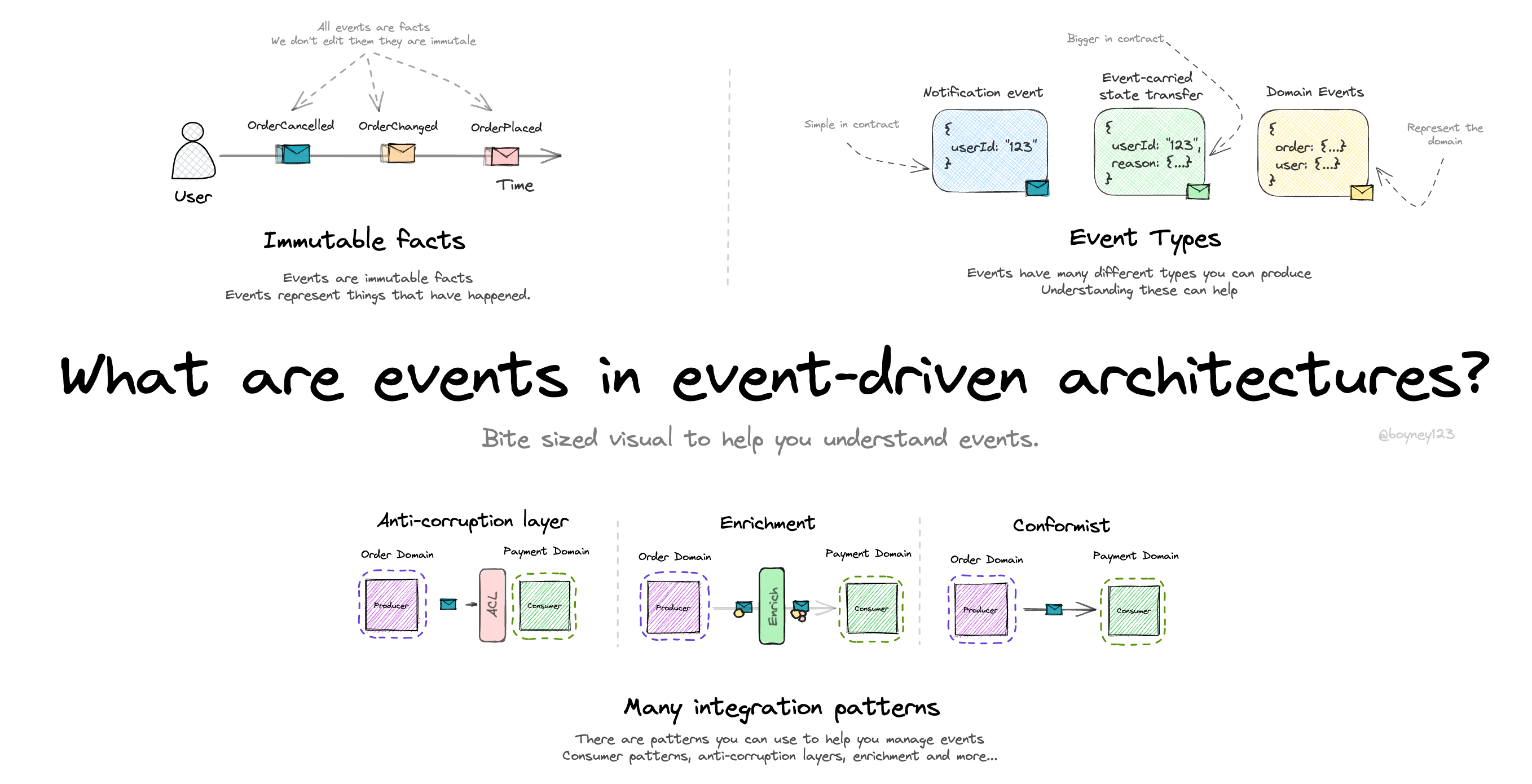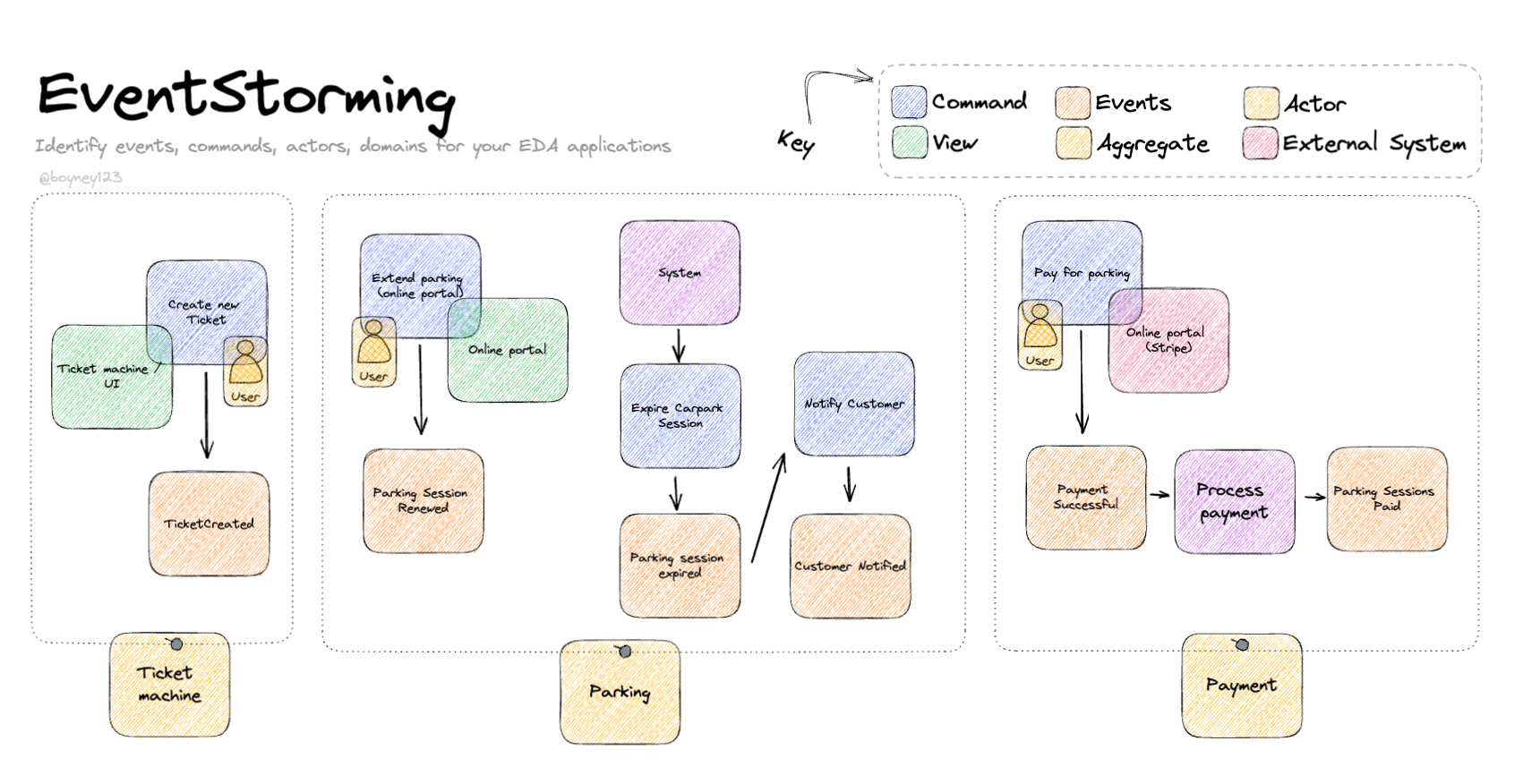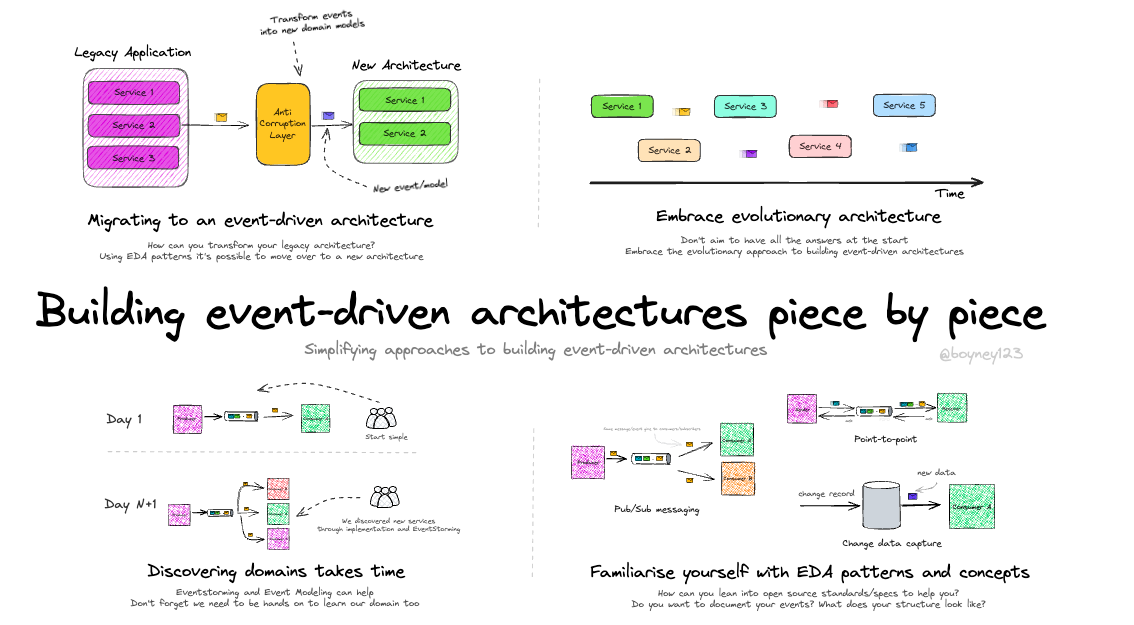What are events? By David Boyne
What are events? By David Boyne

Learning event-driven architecture?
I built EventCatalog — an open-source tool that helps you visualize, document, and understand how events, services, and domains connect in event-driven architectures.
Perfect for learning: Create visual diagrams, document your first events, and see how everything connects. Get started for free →
Events may seem simple, raise something and react somewhere, but as you dive deeper into event-driven architecture and start building solutions you soon realise that there is much more to events that you initially thought.
Understanding the core concepts, event types and exploring integration patterns with events can really help you understand events at a deeper level, which can help you when building event-driven solutions.
Immutable facts
-
Events are immutable facts. Things that have happened that cannot be undone or changed.
-
Events are great a representing real-life scenarios. Events happen all the time, everywhere. The time you played that song, took the bin out, ordered something online, cooked food, at most situations events are happening.
Event Types
-
When you start, you may just be publishing any kind of event without much thought. This works initially but can lead you to problems with inconsistent events, poor event design, migration and much more (link to video to help understand).
-
Events come in many different sizes and patterns, many developers building event-driven solutions use various different event types based on their use case.
-
Examples of these are notification events (keeping contracts simple), event-carried state transfer (putting more information into the events), domain events(events representing your domain), delta events (events that give the difference between old and new), and many more…
-
Understanding these event types can help, and there are more resources below to dive deeper.
Many integrations patterns
-
Integration patterns give us ways in which we can interact, consume and manipulate information before consumers get it.
-
Anti-corruption layer (ALC) is a popular pattern that engineers use to map consumed events into events/models that the consuming domain understands. For example consuming an
OrderPlacedevent within thePayment domain, the payment domain may want to map this event into a structure/schema that the payment domain understands. -
Enrichment allows events to be enriched with information before downstream consumers consume them. This pattern allows producers to raise simple events, and consumers get information they may require even if it is not on the original event.
-
Conformist pattern is when consumers conform to events as they are. No enrichment, no mapping, nothing. They take the event and consume it. This can be great for domains that life close together, but be careful not to conform to implementation details exposed in events.
-
Enterprise Integration Patterns is a great resource to dive deeper into messaging integration patterns. Worth reading and re-reading.
Extra Resources
-
Enterprise Integration Patterns - Fantastic resource to dive deeper into integration patterns, a must read if you want to learn more.
-
Messages between bounded context - Another visual to help you understand how to integrate bounded context with messages and what patterns to help you.
-
Event first thinking - A talk I gave at GOTO in 2022 talking about event-first thinking. I talk about event design, trade offs and the importance of event-first thinking.
-
What do you mean by “Event Driven?” - Martin Fowler dives into event-driven architecture and talks about the different types of events
-
Many different event types - Dive deeper into event types, what they are and what they mean.
-
Content enrichment pattern - Visual to help you learn more about the enrichment pattern and resources to dive deeper.
-
Internal vs External Events - Visual to help you understand the difference between internal and external events
Explore other visuals
Want to work together?
If you're interested in collaborating, I offer consulting, training, and workshops. I can support you throughout your event-driven architecture journey, from design to implementation. Feel free to reach out to discuss how we can work together, or explore my services on EventCatalog.
EDA Visuals: The book
Join over 13,000 others learning EDA and download all the EDA visuals directly to your computer.
This book contains all the visuals in one book, you can download, read offline and explore.
If you would like to support my work, you can purchase the book. This helps keeping the visuals free for the community. Purchase the book



